4. Author and Date:
Ali Y. Alwahti, November 8, 2003
5. Discourse and Status:
ALLEGATION AND IN PROGRESS
Experts in the vanilla industry
identify quality as the key feature for the trade of this commodity. Despite
the absence of a particular dispute regarding vanilla from the agenda
of most multi-lateral organizations, an emerging trend of using alternative
products to natural vanilla foreshadows potential disputes. Indeed, with
the increasing use in developed countries of synthetic vanilla, also known
as “vanillin,” a legal issue might arise within the current
framework of the World Trade Organization (WTO), particularly under the
Agriculture Negotiations (Get more).
|
6. Forum and Scope:
MADAGASCAR AND UNILATERAL
Vanilla producing countries
are mainly developing countries and small island states, most of which
lack of resources, economies of scale and are vulnerable to environmental
problems. The Uruguay and Doha rounds in the WTO framework address this
group of nations with specific “special and differential treatments.”
For example, under the Uruguay round recommendations, developing countries
have flexibility in committing to the WTO regulations regarding agriculture
commodities. |
The propensity
of developing nations to regroup in order to maximize their interests
in the framework of the WTO has been an important element in fostering
support from developed nations for these special treatments in favor of
nations in the South. The Cairns Group, for example,
includes many WTO members both from developed and developing countries.
At the same time, the rise of regional blocks such the COMESA in southern
Africa, a group that aims at maximizing trade within their region, becomes
an important asset for developing nations to succeed in the WTO negotiations. |
(Find Law
that covers vanilla in Madagascar)
7. Decision Breadth:
1 (MADAGASCAR)
If developing countries are
being treated differently from most of the WTO members on the agriculture
agenda, trade of commodities such a vanilla that are vital to their economies
should have a special provision that would guarantee the quality of vanilla.
In recent
years, the price of vanilla and the prospects of increasing revenues of
developing countries have led to the emergence of several vanilla producing
countries such as Uganda, India, Mexico, Papua New Guinea, posing a threat
to the vanilla from Madagascar and the Comoros, which is said to have
a better quality.
|
8. Legal Standing:
LAW
This leads to some concerns
including the competition that vanilla faces with cheap synthetic products
such as synthetic vanillin and other “natural flavours.” In
absence of specific regulations, this could have serious consequences
on vanilla producers in the future. As one analysis concludes, “Despite
regulations which currently restrict replacement by synthetic products,
biotechnology is also threatening all or part of the world vanilla market
- assuming that legislation concerning the use of the word "vanilla"
develops and consumers are prepared to accept the new products proposed.
The issue of quality was also
raised specifically in the USA, one of the two main vanilla consumers,
in trade issues with Mexico. Indeed, it is believed that vanilla extract
from Mexico can have tonka bean extract added. The tonka bean extract
smells like vanilla, but contains coumarin, a substance banned by the
US Food and Drug Administration (FDA) as a food additive after studies
showed a link between coumarin and liver and other organ damage.
Get more on these two
sections
Given that
Madagascar and the Comoros are members of the Africa, Caribbean and Pacific
(ACP) group, thus benefiting special trade preferences through the European
Union market, and given the specific quality of its vanilla (different
from the Mexico’s vanilla), the quality of their vanilla should
be protected.
|
Similar Cases in International
Disputes
There have been no disputes
at the WTO regarding vanilla. However, few disputes on agricultural commodities
provides some lessons to learn if any disputes concerning the quality
of vanilla is to be raised. The WTO disputes include the following:
IMPORT PROHIBITION ON CANNED TUNA
WITH SOYBEAN OIL- Introduced by Thailand against EGYPT:
Under the General Agreement on Tariffs and Trade 1994 (GATT), and Article
11 of the Agreement on the Application of Sanitary and Phytosanitary Measures
(SPS Agreement), the dispute was about the prohibition imposed by the
Arab Republic of Egypt on importation of canned tuna with soybean oil
from the Kingdom of Thailand.
CERTAIN MEASURES PREVENTING THE
IMPORTATION OF BLACK BEANS FROM NICARAGUA-Introduced by Canada against
MEXICO:
Under the General Agreement on Tariffs and Trade 1994 (GATT), and Article
11 of the Agreement on the Application of Sanitary and Phytosanitary Measures
(SPS Agreement), and Article 6 of the Agreement on Import Licensing Procedures,
Article XXII of the General Agreement on Tariffs and Trade 1994 and Article
4 of the DSU, the dispute was about certain measures preventing the importation
of black beans from Nicaragua.
|
9. Geographic Locations
a. Geographic Domain: Africa
b. Geographic Site: East Africa
c. Geographic Impact: Madagascar
10. Sub-National Factors:
NO
11. Type of Habitat:
Tropical
12. Type of Measure:
CULTURE
There are
no known WTO disputes on vanilla or claims of Cultural Geographic Indicators
for this product. However, vanilla from Madagascar, according to the European
Commission, got a "national label of origin and quality" that
is to be registered at the international level. Trade of vanilla falls
under the Harmonized Commodity Description and Coding System (Harmonized
System or H.S.-# AND DESCRIPTION). Vanilla trade is also covered
under TRIPs because artificial vanilla produced in developed countries
might close the global market to the South. |
13. Direct v. Indirect Impacts:
INDIRECT
14. Relation of Trade Measure
to Environmental Impact
a. Directly Related to Product YES,
Products that use vanilla
b. Indirectly Related to Product : YES, Vanilla
c. Not Related to Product : NO
d. Related to Process : YES, Deforestation, Habitat Loss
15. Trade Product Identification:
Vanilla
16. Economic Data
A major component of the labor
force in Madagascar and Comoros is found in the agricultural sector. In
2000, the vanilla production line in Madagascar employed about 20,000
growers and 5,000 producers. Although we lack data to estimate the population
involved in vanilla production in the Comoros, a significant portion of
the more than 70% of the active population which works in rural areas,
is active in the production of vanilla, one of the country's two export
crops. Labor force and industry output for the two countries are summarized
below.
In both countries,
vanilla export is monopolized by the government and the associations of
vanilla exporters. Likewise, the government sets the final prices, both
for the green bean and the final product. Vanilla export represents a
large portion of government revenues, thus monitoring vanilla production
and vanilla trade in the world became some of the priorities of the governments
of Comoros and Madagascar. Policy makers of these countries recognize
the effects that a cyclone or a disease on vanilla in disrupting the social
safety nets in these developing countries. Yet, all actors in the vanilla
production are equally concerned by the increasing use of synthetic vanilla
in the industrialized world.
Additional
concerns have also been raised from emerging cooperatives of vanilla farmers.
These particularly address fairness on the price of green and processed
vanilla to the farmers. Indeed, in a move to improve fair-trade in the
industry, farmers have been organizing and getting support from union
activists in vanilla import countries. For example, COVADEC ( Coopérative
de Vanille des Comores) a vanilla cooperative that claims about
400 members in the Comoros has been receiving support from the Confederation
Francaise Du Travail (CFDT), a French workers union based in the North-Western
city of Dunkerque (source: http://asso.nordnet.fr/aice/pour_un_monde_solidaire.htm).
|
Production of green vanilla
beans in the Comoros between 1997 and 2000 decreased from 815 tons to
685 tons while export of processed vanilla although reached a spike of
184 tons in 1999, declined to 159 tons in 2000. |
| Comoros
-Vanilla |
1997 |
1998 |
1999 |
2000 |
| Exports (tonnes) |
164 |
132 |
184 |
159 |
| Production (green; tonnes) |
815 |
943 |
600 |
685 |
Source: Economist Intelligence Unit
2003
Export of vanilla
in Madagascar, on the other hand shows an increasing trend in vanilla production.
| Madagascar-Vanilla |
1997 |
1998 |
1999 |
2000 |
2001 |
| Exports (in thousands of tonnes) |
0.7 |
0.7 |
1.3 |
1.1 |
1.6 |
Source:
“IMF-Madagascar-Selected Issues and Statistical Appendix, December 2002,”via:
http://www.coi-info.org/francais/quest.asp
| Vanilla Export in Value and Percentage terms (2000) |
Value ( 000 of US$) |
% (of Global Market) |
| Madagascar |
63,811 |
59.2 |
| Comoros |
7,280 |
6.7 |
| Total |
71,091 |
65.9 |
Source:
“Global Spice Markets: Imports-1996-2000” International Trade Centre
UNCTAD/WTO
| Comoros |
1995 |
1996 |
1997 |
1998 |
1999 |
2000 |
| Total Population (in thousands) |
497.0 |
506.7 |
517.3 |
527.9 |
538.5 |
549.3 |
| Labor Force (in thousands) |
140.7 |
144.5 |
146.9 |
149.9 |
152.9 |
156.0 |
| Unemployed (in thousands) |
28.0 |
29.0 |
30.0 |
30.0 |
31.0 |
31.2 |
| Unemployed (in percent of labor force) |
19.9 |
20.1 |
20.4 |
20 |
20.3 |
20 |
Source: “IMF-Comoros-Recent Economic
Developments-December 2001 ,” via: http://www.coi-info.org/francais/quest.asp
| Madagascar |
1997 |
1998 |
1999 |
2000 |
2001 |
| Total Population (in thousands) |
13,803 |
14,222 |
14,650 |
15,085 |
15,529 |
| Labor Force (in thousands) |
n/a |
n/a |
n/a |
n/a |
n/a |
| Unemployed (in thousands) |
n/a |
n/a |
n/a |
n/a |
n/a |
| Unemployed (in percent of labor force) |
n/a |
n/a |
n/a |
n/a |
n/a |
Source: “IMF-Madagascar-Selected Issues
and Statistical Appendix, December 2002,” via: http://www.coi-info.org/francais/quest.asp
Population
Data
| Madagascar |
Population, mid-2002 (millions) |
Population (%) |
Labor force (%) |
| |
16.4 |
|
|
| Average annual growth 1996-02 |
|
3.0 |
3.2 |
Source:
World Bank: http://www.worldbank.org/data/countrydata/aag/mdg_aag.pdf
Population
Data
| Comoros |
Population, mid-2002 (millions) |
Population (%) |
Labor force (%) |
| |
0.59 |
|
|
| Average annual growth 1996-02 |
|
2.5 |
2.8 |
Source:
World Bank, http://www.worldbank.org/data/countrydata/aag/com_aag.pdf
17. Impact of Trade Restriction:
LOW
According to the WTO, Madagascar
has liberalized its trade regime in recent years with a trade policy framework
essentially based on tariffs. In addition, export restrictions have been
eliminated.
Although this category seems to
be absent in the vanilla production and trade, few elements are noteworthy.
The Madagascar's share in the international market of vanilla during the
past 20 years has fallen due to policies of increasing export prices and
excessive taxation by the Government of Madagascar. This, according to
policy-makers has resulted in an increased impoverishment of the workforce
and a constant price fluctuation. Accordingly policy-makers and Western
donors initiated a set of reforms by 1999 geared at liberalizing the vanilla
market.
The rise in recent years of vanilla
robbery and smuggling in Madagascar has resulted in tax evasions (via
neighboring islands such as Reunion and the Comoros) and the loss in quality
of green vanilla beans. Experts contend that government's failure to control
this smuggling also has effects on the vanilla price in the international
market.
A final concern is the competition
that vanilla faces with cheap synthetic products such as synthetic vanillin
and other "natural flavours." In absence of specific regulations,
this could have serious consequences on vanilla producers in the future.
As one analysis concludes, ", “Despite regulations which
currently restrict replacement by synthetic products, biotechnology is
also threatening all or part of the world vanilla market - assuming that
legislation concerning the use of the word "vanilla" develops
and consumers are prepared to accept the new products proposed.”
[see Note]
|
18. Industry Sector: Foods
[FOOD]
19. Exporters and Importers:
MADAGASCAR and MANY
Case Exporters : Madagascar, Comoros, and emerging producer countries in
Africa and Asia.
Case Importer : USA
and Europe
Leading Exporters (US $): See
tables
Leading Importers (US $): See
tables
20. Environmental Problem Type: CULTURE
Thanks to
a favorable maritime tropical climate, the islands of the South-Western
part of the Indian Ocean are home of some of the expensive spices in the
world. For example, in addition to vanilla, Ylang-Ylang, a flower whose
extract is used in perfumes, is the second labor-intensive and expensive
cash crop of these islands. When market forces encourage export, these
crops can sometimes represent an important income for farmers who engage
in the vanilla production line. Yet, the geographic location of the islands
has also some inconveniences that impact on the production of these crops.
The region is home of cyclones, cyclonic winds and strong rainy seasons.
For example, in 2000, cyclone Hudah hit Madagascar and destroyedmore than
20 percent of its vanilla crop and the beans that were in storage. This
resulted in the sky-rocketing of the price vanilla in the world market.
Cyclones are frequent in that region of the Indian Ocean, thus producers
are constantly faced with the danger of loosing their precious commodity.
Some vanilla
experts also blame global warming as having a direct impact on the climatic
changes in the region (get more).
The curing
process, which consists of heating the vanilla beans in hot water for
three minutes at a particularly selected temperature of 65 degrees Celsius
is the phase that engenders the most environmental devastation in these
countries. Wood is the main source of energy and trees from the primary
rainforest are the most exposed to deforestation. Years of tree cutting
and the failure to develop alternative sources of energy, such as using
heavy fuel burners, have led to the use of coconut palm trees in the vanilla
production. Indeed, the envelope of the dry coconut (more)
is highly volatile and producers have found in it a cheaper and better
source of energy.
|
21. Name, Type, and Diversity of Species
Bourbon
vanilla: named after the islands in the Western Indian Ocean comprised
of Reunion, Mauritius, Madagascar, and the Comoros. Similar to Mexican
vanilla. |
Tahitian
vanilla Scientific Name |
Mexican vanilla:
from the birth place of vanilla |
22. Resource Impact and Effect:
LOW and PRODUCT
Cyclones are frequent in that
region of the Indian Ocean, thus producers are constantly faced with the
danger of loosing their precious commodity. As a result of a cyclone in
2000, the price of vanilla in the world market has the sky-rocketing since
then.
Vanilla growing does not requires
the clearance of virgin land because it needs shade and is usually inter-planted
among others crops such as coffee and bananas (source VSurvey).
However, years of tree cutting and the failure to develop alternative
sources of energy, such as using heavy fuel burners, have led to the use
of coconut palm trees in the vanilla production. The
process is putting more pressure of impoverished populations whose diet
is heavily dependent on coconut (see more under "culture" below).
The emergence of a "disease"
that hits coconut palm trees especially in the Comoros [2]
is also hitting the vanilla beans. As a result the quality of vanilla
beans is decreasing, coconut trees are diseappearing since the disease
also destroys the protective vegetation around coconut trees.
|
|
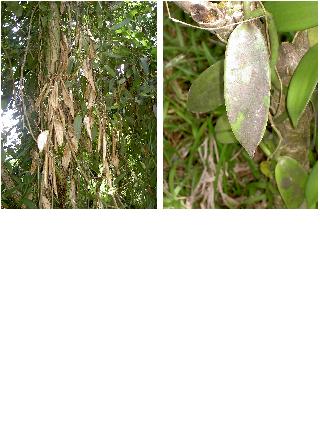
© Ya.Ha.Na.
SARL
|
23. Urgency and Lifetime:
LOW and SEVERAL YEARS
Research about the vanilla "disease"
is only starting and its outcome remains uncertain since resources for conducting
such researches are scarce.
24. Substitutes:
LIKE PRODUCTS
There is a noted increase in the use
of cheap synthetic products such as synthetic vanillin and other “natural
flavours” as substitutes to vanilla. However, the issue of quality is
being raised by both vanilla industries and consumers in most vanilla consuming
countries [3].
VI. Other Factors
25. Culture: YES
In the Comoro Islands and Madagascar,
where vanilla is one of the main cash crops, the labor-intensive industry of
vanilla involves both men and women. In the French colonial times, a vanilla
producer typically consisted of someone of a high social status, who had ties
with the local elite and the colonial administrators, and who easily accessed
to bank loans that enabled him/her start the vanilla business. Another condition
for that person was to have a large piece of land where processed vanilla beans
had to be dried for months before they could be consumed and packed for export.
A final condition was to have the necessary storage capacity for the processed
beans.
The various phases involved in the production
of vanilla beans include growing, picking, curing, drying, and sorting. Most
stakeholders, from vanilla gowers to exporters, are all involved at one or more
of the stages.
26. Trans-Boundary Issues:
NO
The harvesting season of green vanilla
usually takes place during the cool and dry season between May and September
in Madagsacar and the Comoros. Months prior to the picking season peasants spend
many nights in their plantations watching after their vanilla. Indeed, due to
the high cost of vanilla, robbery has grown in recent years and some growers,
for example in Madagascar, started to brand their individual green beans, by
pricking them with a pin [4] with the
marking remaining on the dried beans. The theft problem also highlighted another
issue with the early picking of the green beans. The green vanilla bean looses
its quality when picked too early before its maturation. This, together with
the discovery of a mysterious disease that hit vanilla, can have a repercussion
on the overall economic revenues and can be devastating for the vanilla producing
countries. For example, the Comoros' vanilla production has plummeted from 200
tons in 1994 to 100 tons in 2002.
27. Rights:
TRIPs:
Vanilla is covered
under the TRIPs agreement (How?). However, TRIPs
also covers trade in agriculture and life forms which bears heavily on sustainable
development. However, agricultural research and innovation, mainly in the North,
have found new techniques which enable Northern firms to artificially produce
southern export goods such as vanilla, which is favoring developed countries
from the North and closing the market from the South.
European Union's framework:
The European Union
encourages diversity in agricultural production, protect them from misuse and
imitation, and help consumers by informing them on the specific characters of
the products under the EU's PDO, PGI, and TSG. Given that Madagascar is member
of the Africa, Caribbean and Pacific (ACP) group, thus benefiting special trade
preferences through the European Union market, and given the specific quality
of its vanilla (different from the Mexico's vanilla) can Madagascar claim an
CGI claim?
28. Relevant Literature
The research uses a wide range of documents
from various web sites including the WTO, World Bank, USTR, European Union,
FAO, The Coalition for Intellectual Property Rights, The Indian Ocean Commission.
It also draws input from interviews by government officials and professional
officers in the vanilla industry.
Notes:
[2] “Vanilla:
an endangered flavouring” African News Service - Bulletin d'Information
Africaine, ISSUE/EDITION Nr 348 - 15/06/1998, accessible at http://www.peacelink.it/anb-bia/nr348/e02.html.
[3] Vanilla.com
[2] Personal communication
with Ya.Ha.Na. Sarl, vanilla company based in the Comoros
[3]CNN
article
[4]www.theepicentre.com
[Note] on Section 17:“Vanilla: an endangered flavouring”
African News Service - Bulletin d'Information Africaine, ISSUE/EDITION Nr 348
- 15/06/1998, accessible at http://www.peacelink.it/anb-bia/nr348/e02.html
1/2001

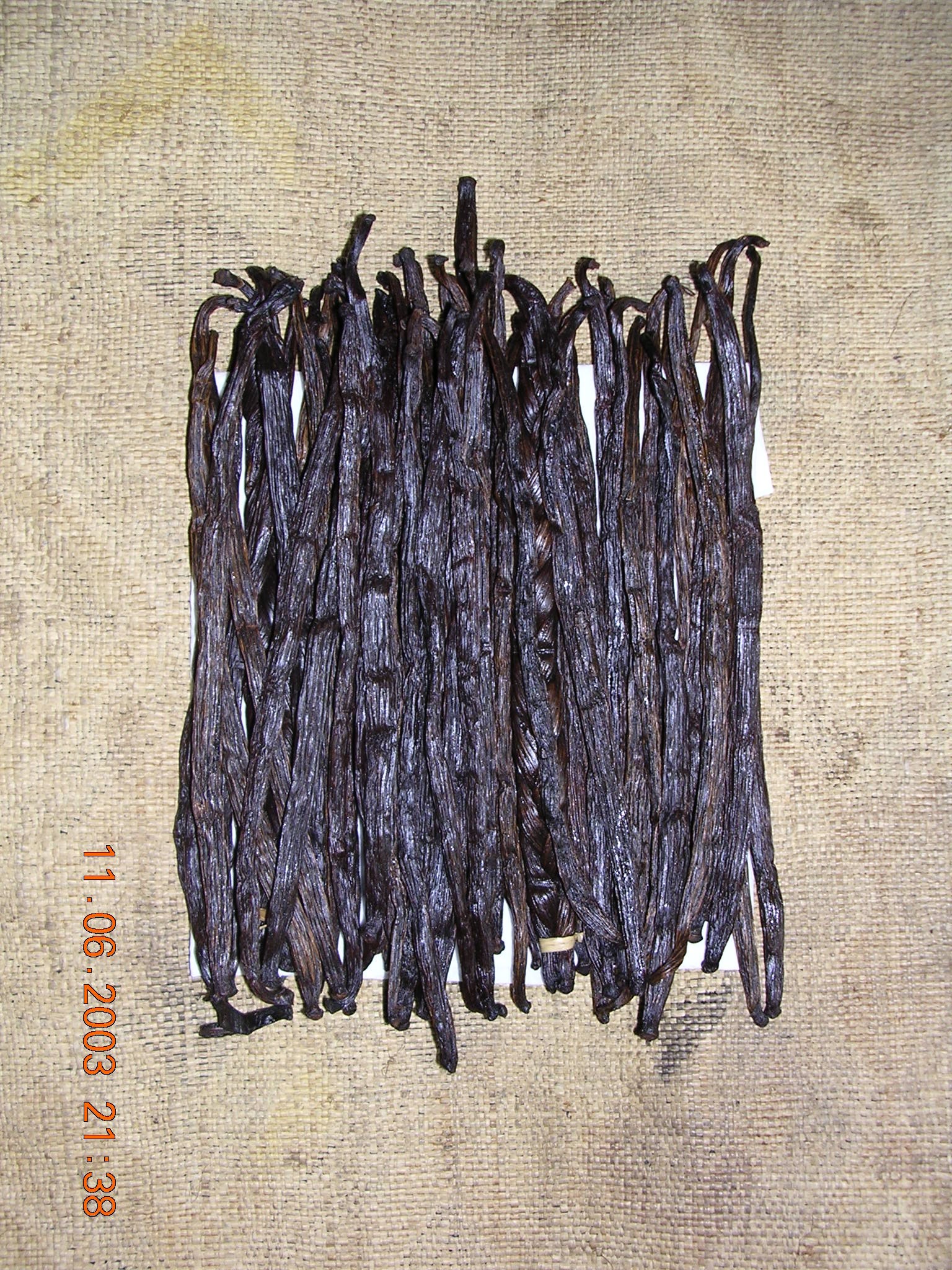
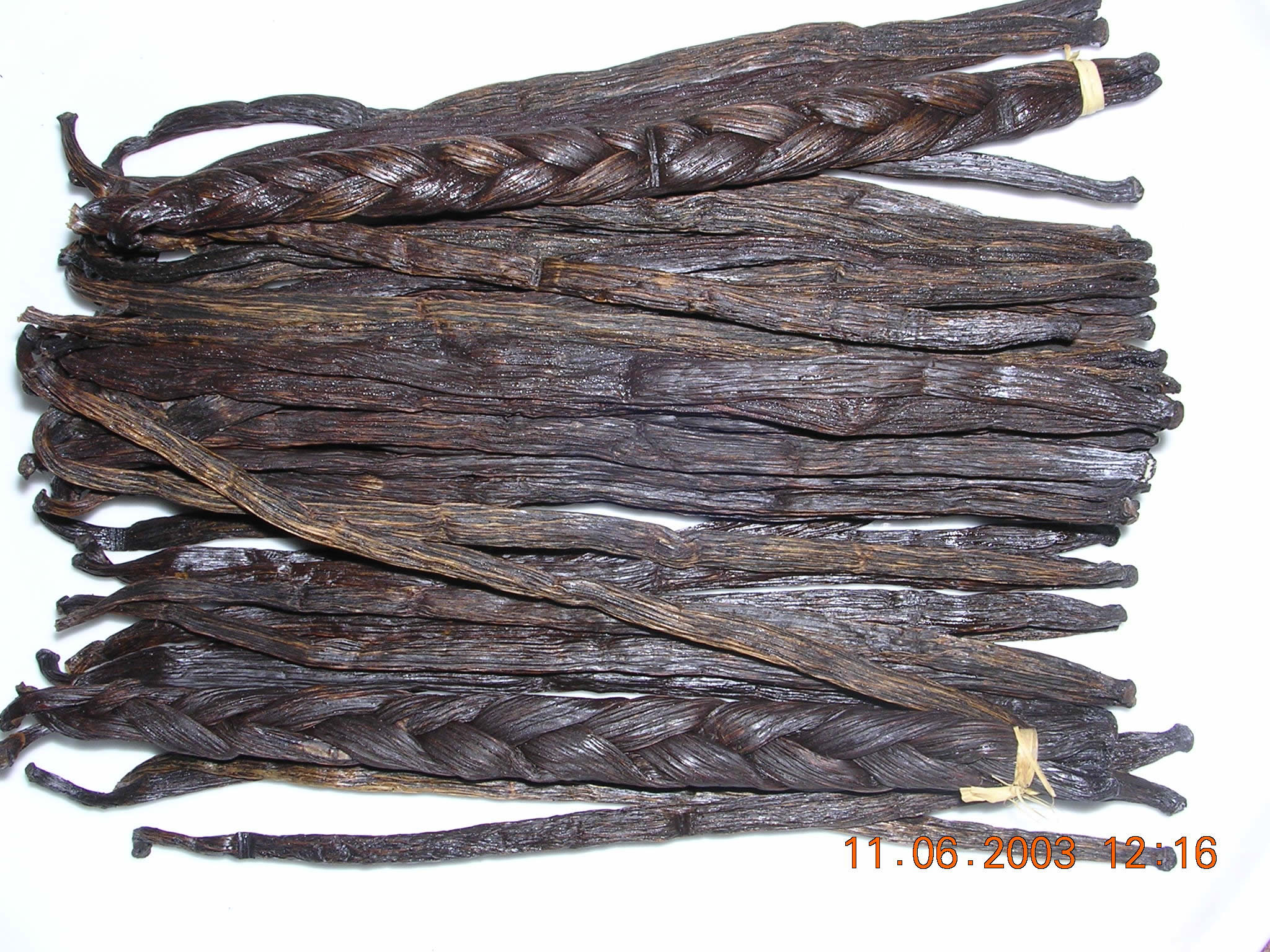
.gif)
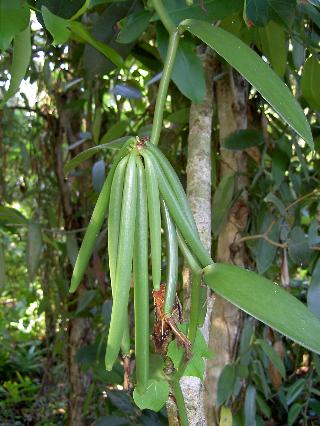
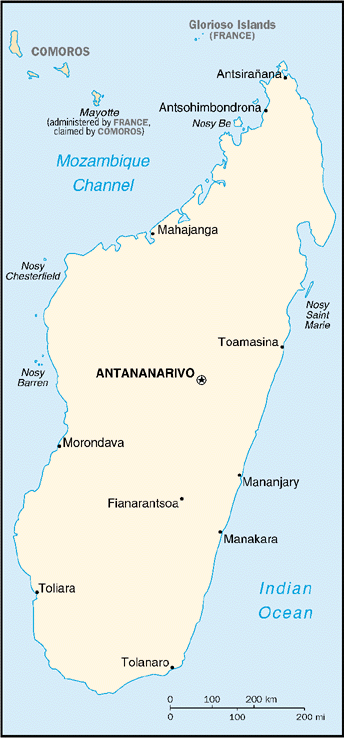
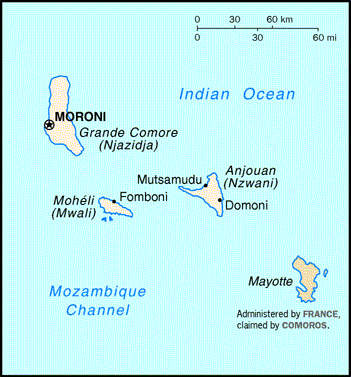

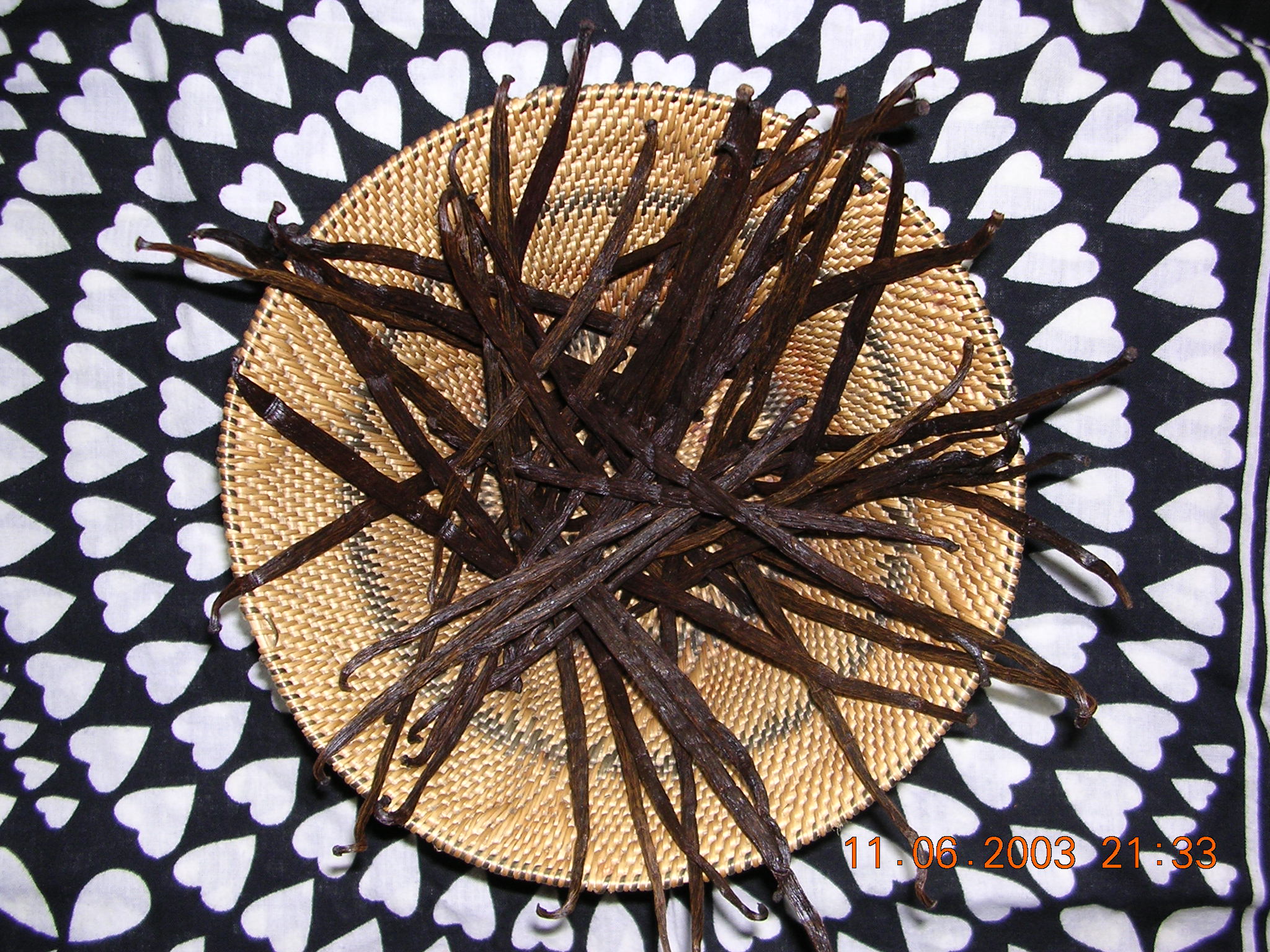
 V. Environment Clusters
V. Environment Clusters